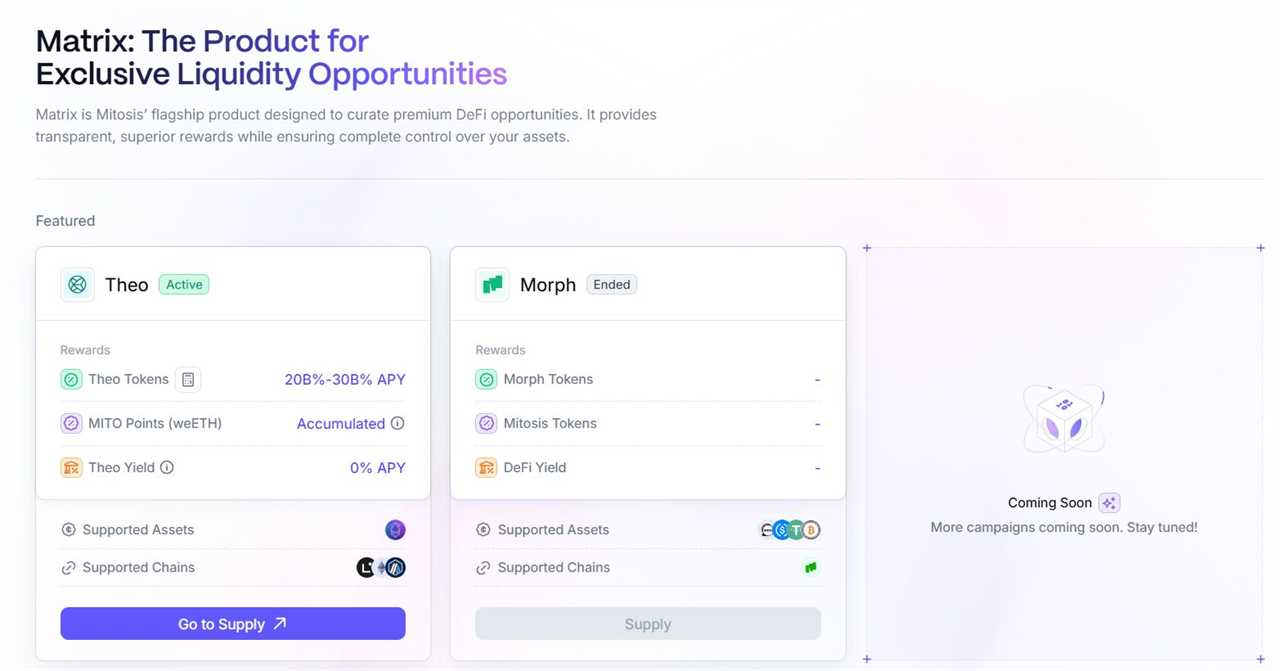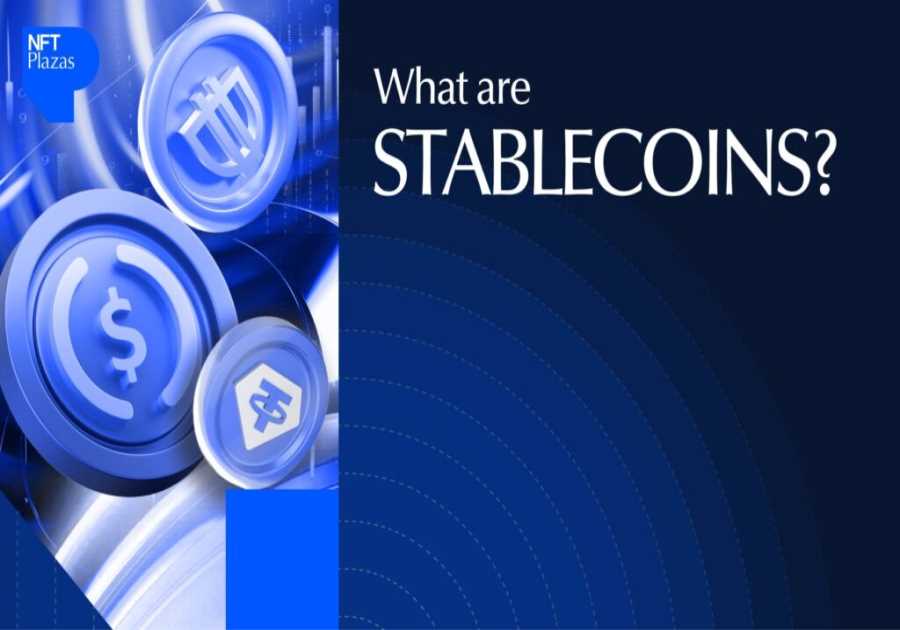As technology continues to evolve, new blockchains emerge, bringing fresh strengths and utilities. However, this modular approach creates the challenge of fragmented liquidity across different chains. The Mitosis chain proposes a novel liquidity protocol to address this challenge.
This guide explores the Mitosis crypto project and its role in the dynamic modular DeFi ecosystem.
What is Mitosis?
Mitosis is an emerging Layer 1 blockchain protocol designed to enhance DeFi liquidity within decentralized applications built on modular blockchains. The platform addresses the challenge of fragmented liquidity by serving as a liquidity hub that connects various DeFi ecosystems. The Mitosis Chain facilitates cross-chain liquidity by allowing users to deposit crypto assets from supported chains, in addition to receiving interchangeable tokens.
Mitosis utilizes cross-chain transactions to enhance capital efficiency by unlocking locked assets across the modular DeFi space. The platform has developed a new liquidity model targeting various blockchain networks and decentralized applications (dApps). The aim is to enable dApps and modular blockchains to attract more Total Value Locked (TVL) through community-owned liquidity.
The primary purpose of Ecosystem-Owned Liquidity is to simplify decision-making for individual liquidity providers. Retail crypto users often experience choice overload when selecting a liquidity provider to allocate their liquidity. EOL unifies yields across different blockchain networks, enabling users to avoid comparison hassles across multiple blockchains while enjoying cross-chain yields.
Key Benefits of Mitosis
The Mitosis crypto project is designed to address inefficiencies within traditional DeFi liquidity models, decentralized exchanges, AMMs, and liquidity pools. The platform addresses issues such as limited control over liquidity, impermanent loss, and transferring liquidity across different blockchains. The solution proposed by Mitosis is a community-centric and programmable liquidity framework that promotes efficiency, flexibility, and inclusivity.
The platform’s key benefits include the creation of a scalable, decentralized, and interoperable DeFi ecosystem with enhanced capital efficiency. The proposed beneficiaries of the system include large-scale DAOs and individual retail investors who can manage and optimize liquidity collectively. Mitosis achieves this through its primary feature, EOL, and utilizes tokenized liquidity positions, dubbed miAssets and maAssets.
Browse Exclusive Deals
The platform transforms static locked assets from multiple chains in traditional DeFi protocols into a flexible programmable asset. Users who deposit assets like weETH are given tokenized miAssets, such as miweETH, at a 1:1 ratio. Holders can utilize these assets across various DeFi protocols within the Mitosis ecosystem. These new financial instruments help to diversify strategies and monetize opportunity costs, besides facilitating seamless interaction with DeFi Apps.
Supply Liquidity & Earn
By partnering with leading DeFi protocols like Hyperlane, Symbiotic, and Ether.fi, Mitosis gives users high-yield opportunities. Users can deposit liquidity into Matrix Vaults and earn exclusive rewards, including MITO Points and multi-chain yields.
Unlock Your Liquidity
Liquidity fragmentation across multiple chains has always complicated participation. Now, Mitosis helps users address the problem by unifying yields across participating blockchains, including Arbitrum, Ethereum, and Scroll. Users no longer have to navigate complex cross-chain processes after depositing crypto assets on a participating blockchain. Mitosis’s seamless interoperability eliminates choice overload, allowing users to benefit from cross chain liquidity provision.
How Mitosis makes liquidity ‘programmable’?
The new financial instruments by Mitosis create programmable liquidity by transforming locked, static DeFi assets into tradable tokens within the ecosystem. Users’ assets deposited into cross-chain vaults are utilized in governance-driven EOL and predefined metric campaigns. This promotes flexibility in capital deployment and how users can participate in yield-generating strategies.
Here is how the program works:
- Depositing Assets: A user deposits an asset from any blockchain into Mitosis Vaults.
- Receiving Hub Assets: The user gets a standardized Hub Asset transformed into a liquid, tokenized representation of their deposit.
- Two Yield-Generating Frameworks: The Hub asset can be utilized in EOL programs through yield-generating activities or the Matrix to participate in curated liquidity campaigns.
- Tradable Positions: The tokenized DeFi liquidity position makes the assets liquid and composable for trading on secondary markets, ensuring they aren’t locked in like in traditional DeFi.
- Democratizing Access: This process democratizes access to institutional-grade strategies, resulting in a more transparent and equitable DeFi ecosystem.
What is EOL (Ecosystem-Owned Liquidity)?
As Mitosis’s flagship product, EOL aggregates liquidity from retail providers within the structures of Decentralized Autonomous Organizations (DAOs). The mechanism enables small liquidity providers to become part of larger environments similar to financial institutions within the DeFi ecosystem. As a result, any individual liquidity provider can benefit from a large-scale liquidity pool. In EOL, users make decisions on liquidity terms and allocation through voting or forum discussions.
Users can access EOL liquidity pools via Mitosis repositories. Once they deposit assets like weETH and receive miwiETH, they receive voting rights that enable them to vote on liquidity provision decisions.
What is Matrix?

Matrix is a specific Vault Liquidity Framework that curates and provides high-yield to DeFi protocols. It acts as a middle ground between DeFi projects and liquidity providers. Once a user has deposited an asset into Mitosis Vaults, they receive a representative Hub Asset. Users can deploy the assets into a curated liquidity campaign using the Matrix Framework for a chance to earn superior rewards. Compared to traditional methods, Matrix is more flexible, as users can withdraw funds at any time and forfeit their accrued rewards. The feature transforms standard liquidity into a programmable asset that investors can use in advanced financial engineering.
What is the Mitosis ($MITO) token?
The MITO token is the native token of the L1 blockchain platform, serving as both a utility token and governance token. MITO is designed to facilitate activities such as liquidity provision, staking, and governance through the Morse DAO. This allows token holders to vote on asset management strategies and protocol upgrades. MITO is also used for community incentives and ecosystem upgrades.
Tokenomics
- Token name: Mitosis
- Symbol: MITO
- Blockchain: 1,000,000,000 MITO
- Initial airdrop: 10% (100 million MITO)
The Distribution model for MITO is as follows:

Mitosis (MITO) Listed on Binance HODLer Airdrops
Cryptocurrency exchange Binance has announced an exclusive Season 2 Mitosis airdrop campaign and token generation event on Binance Wallet. The announcement states that the project will distribute $1,400,000 in $MITO during the Season 2 Booster Campaign.
According to the announcement, the airdrop will run for two weeks, from August 26 to September 8, 2025. The airdrop is available to users with a Binance Wallet (Keyless) and doesn’t include a minimum Binance Alpha Points requirement. Users who participated in the Mitosis Booster Campaign and still hold their positions are eligible to receive rewards in Season 2.

Use Cases of Mitosis
The key use cases of Mitosis (MITO) include:
- Governance: Through Morse DAO, MITO holders can vote on decisions within the Mitosis crypto project.
- DeFi Staking and Yield Farming: Holders utilize the MITO token to stake and mine liquidity, earning yield and rewards.
- Liquidity Provision: Using Mitosis vaults, the token enables users to provide liquidity and earn yield from various DeFi protocols, thereby optimizing capital efficiency.
- Cross-chain interoperability: Through miAssets, tokenized liquidity moves seamlessly across the DeFi ecosystem, enhancing yield opportunities.
Conclusions
Whether Mitosis will succeed in future depends mainly on the platform’s ability to address existing challenges in decentralized finance successfully. If the platform effectively bridges the liquidity gap within the modular DeFi space, it could become the solution to fragmented liquidity. Mitosis retains the potential to develop a secure foundational DeFi infrastructure if it delivers on its promises to become a reliable solution.
FAQs
What are Vanilla Assets, miAssets, and maAssets?
In the Mitosis project, Vanilla Assets are a user’s underlying cryptocurrency asset, such as ETH or USDC. The assets can be converted into miAssets, which represent tokenized liquidity, when launched on the EOL platform. maAssets are tokens representing tokenized liquidity provisions that are usable and tradable as collateral across different blockchains.
How is Mitosis different from traditional liquidity mining programs?
Mitosis differs from traditional single-chain liquidity mining due to the Ecosystem-Owned Liquidity concept, which facilitates cross-chain yields. Its tokenized liquidity positions are programmable and composable, thereby addressing liquidity fragmentation and capital inefficiency.
What is Mitosis Chain?
Mitosis Chain is an L1 blockchain and liquidity platform that aims to address liquidity fragmentation issues within modular blockchains. By unifying cross-chain liquidity, Mitosis solves the problem by enabling liquidity providers to deposit assets across chains and receive derivative tokens that can be used in DeFi.
The post What is Mitosis (MITO)? A Guide to Cross-Chain Liquidity Platform appeared first on NFT Evening.
Read MoreBy: Michael Le
Title: What is Mitosis (MITO)? A Guide to Cross-Chain Liquidity Platform
Sourced From: nftevening.com/what-is-mitosis-chain/?utm_source=rss&utm_medium=rss&utm_campaign=what-is-mitosis-chain
Published Date: Sat, 30 Aug 2025 12:52:39 +0000
----------------------------
.png)





